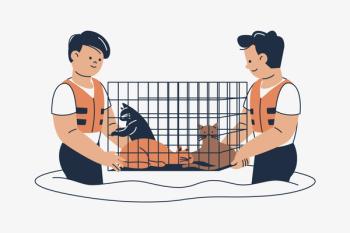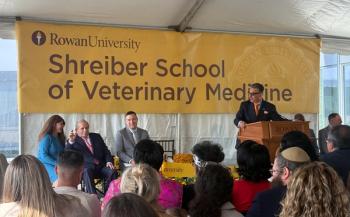
Cat health linked to social status, health of owners, study suggests
A new study links premature human and animal deaths in poor neighborhoods.
Boston — For veterinary clinicians, the correlation between animal health and the socioeconomic status of pet owners is probably obvious. But a new study makes a more definite link, connecting premature deaths among humans to those among animals in poor neighborhoods.
Human health disparities based on affluence are well noted, and now for the first time, Dr. Gary Patronek, VMD, PhD, of the Animal Rescue League of Boston, has made a similar connection for animal health.
"It's the first study anywhere to demonstrate very rigorously how closely human and animal welfare are linked," Patronek says. "The same kinds of things that lead to poor health outcomes in people are leading to poor health outcomes in animals."
Looking at 16 neighborhoods around Boston and measuring the number and condition of cats taken to shelters, Patronek concludes "cat deaths were significantly correlated with human premature deaths at the neighborhood level."
The highest risk of premature cat deaths were among human households that received public assistance, according to the study, published in February in the American Journal of Veterinary Research. The study was based on a similar area-based analysis for human health conducted by Harvard University.
Other households deemed most at risk, in order, are: those with unemployment; crowded households, family households with children in poverty, female-headed households with children, households lacking a high-school diploma and overall poverty.
Poor neighborhoods defined by low incomes weren't just to blame, Patronek adds. Instead, it was places where true poverty across the board could be found.
"It's not just income related," Patronek says. "Poverty, if you were going to define it, is pretty widespread because there are a lot of students and young singles. It doesn't represent the same socioeconomic mix of things as family poverty."
The only neighborhoods of the 16 studied that ran contrary to these findings were the Fenway neighborhood, which is low-income but has a high concentration of college students, and South Boston, which for years has been served by a small, adoption-guarantee shelter that provides low-cost veterinary services to the community. Cat premature mortality rates were about 50 percent less than expected in South Boston, the study notes, and "could be considered evidence of the potential impact of increased access to veterinary care for underserved populations."
In Boston, the study allowed Patronek to see where his city stands compared to those reported by Maddie’s Fund for successful communities, which have between two and seven dog and cat deaths in shelters per 1,000 people. His study revealed that Boston has 3.6 shelter deaths of dogs and cats per 1,000 people.
"Boston is right in the middle of the most successful communities out there," he says. "It's a model that can be used in other places, and it's very topical of pet overpopulation. I think the messages from it are important and relevant."
Newsletter
From exam room tips to practice management insights, get trusted veterinary news delivered straight to your inbox—subscribe to dvm360.




